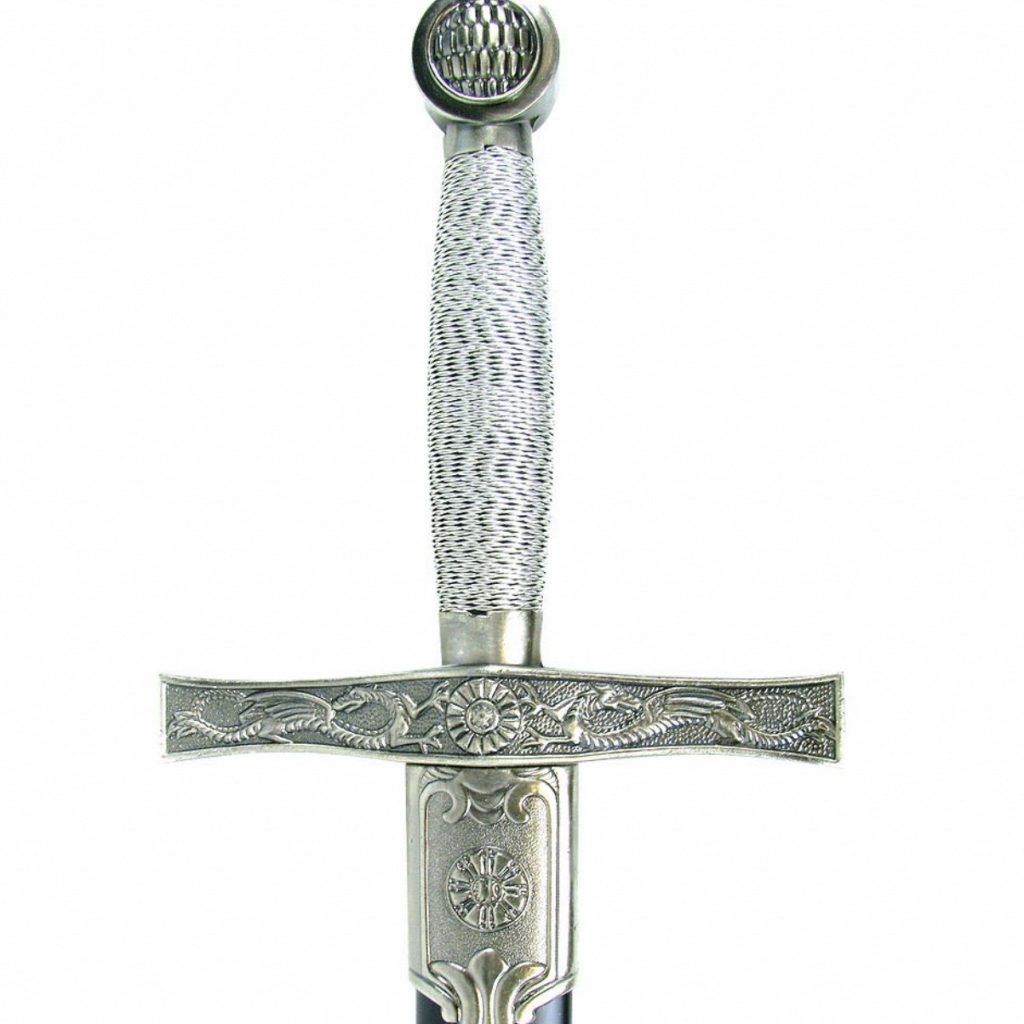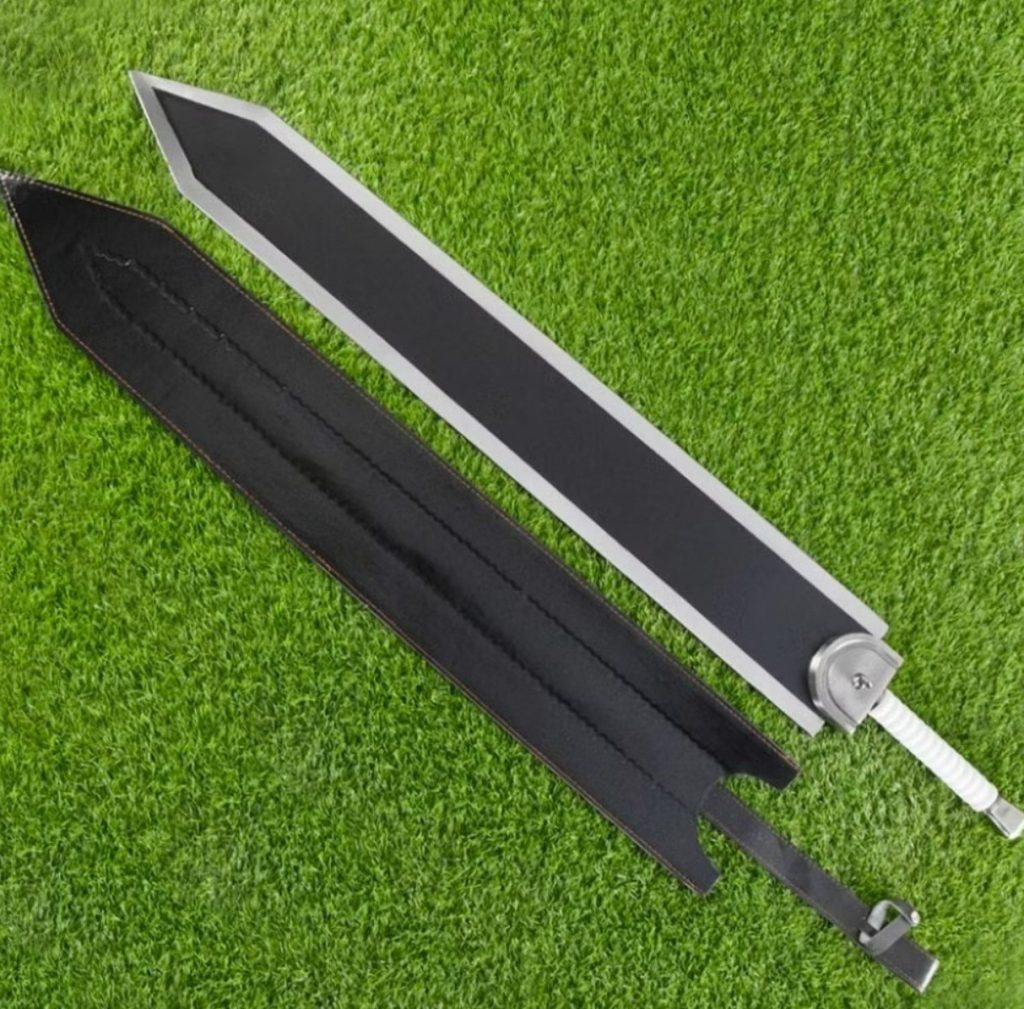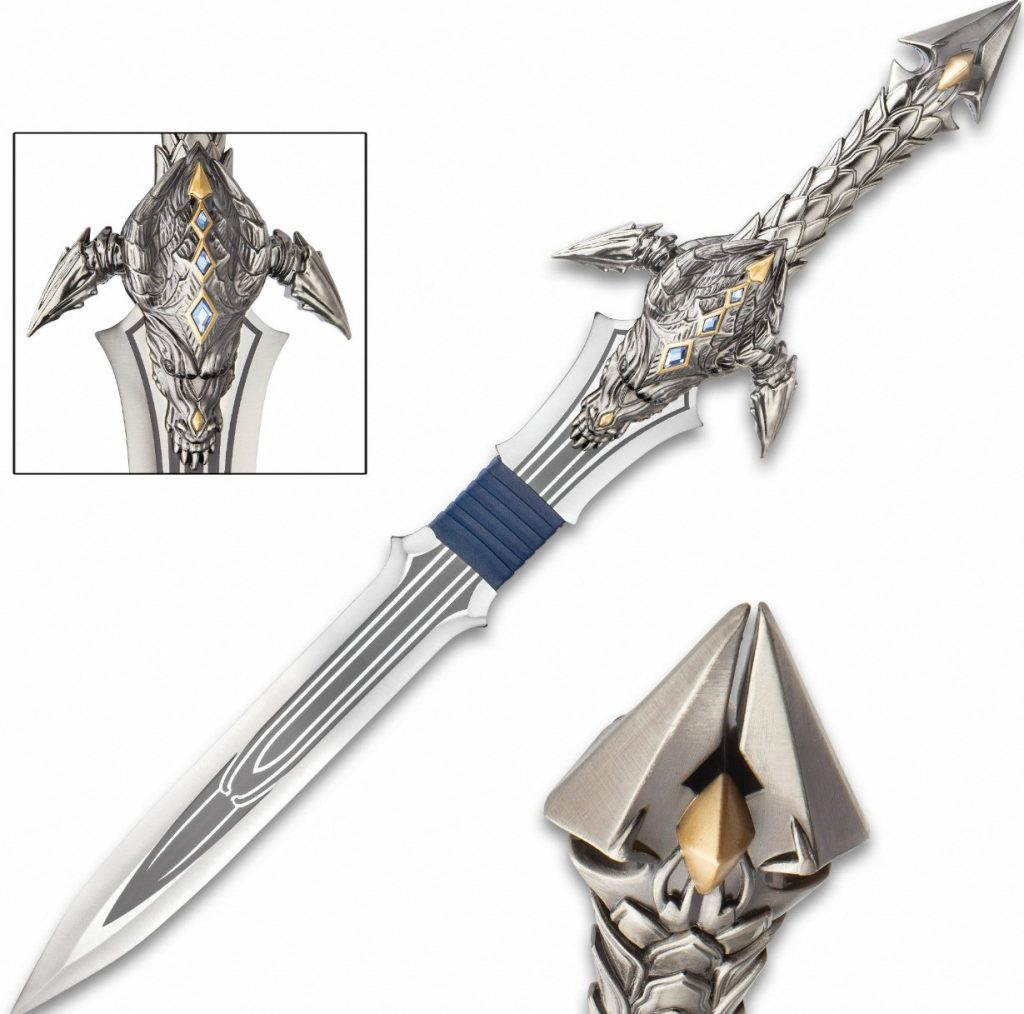The crucible of competition reality show Forged in Fire has seen bladesmiths tackle a vast arsenal of historical and fictional weaponry. But few weapons capture the imagination quite like the Dragon Slayer sword. This legendary blade, often associated with the dark fantasy manga Berserk, embodies the brutal efficiency and raw power needed to fell a fire-breathing behemoth. However, could such a weapon be recreated in the real world, adhering to the limitations of human strength and forging techniques?

Part 1: The Design Challenge
Size and Weight:
The Dragon Slayer is typically depicted as a colossal blade, often portrayed as towering over even the tallest warriors. While this creates a visually imposing and awe-inspiring weapon, its practicality and wieldiness in battle are questionable. Realistically speaking, a sword of such immense size and weight would be nearly impossible for a single warrior to wield effectively in combat. Therefore, in a more practical sense, the Forged in Fire would likely scale down the size of the Dragon Slayer to a more manageable and functional proportion. This would allow for a single, strong wielder to effectively wield it in battle. By doing so, the weapon would not only maintain its formidable and iconic status but also become a more practical and realistic option for use in battle. It ensures that its sheer size does not hinder its effectiveness in combat.
Form and Function:
The Berserk Dragon Slayer is known for its prioritization of raw power over intricate details. Its design features a thick, heavy blade with a simple crossguard, reflecting its emphasis on sheer strength and potency. While it is feasible to replicate this basic design, Forged in Fire bladesmiths might opt to incorporate subtle yet strategic modifications and features to improve the sword’s handling and deadliness.

This could involve refining the grip to enhance comfort and control. It could also involve adding subtle ergonomic elements to ensure a more natural and efficient wielding experience. Additionally, the inclusion of tactical blade enhancements could further amplify the sword’s destructive potential. This can include reinforced edges or carefully positioned weight distribution. By emphasizing both strength and functional design, Forged in Fire could elevate the Berserk Dragon Slayer into a weapon. This weapon would not only embody raw power but also integrate subtle enhancements to maximize its effectiveness in combat.
Part 2: The Forging Process
Material Selection:
The ideal steel for the Dragon Slayer would be a high-carbon steel known for its ability to hold a sharp edge while maintaining structural integrity. Forged in Fire contestants often use steels like 1095 or O-1 tool steel, which would be suitable options.
Forging and Heat Treatment:
The show’s signature challenge would likely involve the intricate process of manipulating the chosen steel. This would create the broad blade and robust tang (the portion that extends into the hilt) of the Berserk Dragon Slayer. Contestants would have to adeptly tackle the forging, shaping, and refining of the steel. They would need to pay close attention to the structural integrity and balance required for such a formidable weapon. The crucial aspect of heat treatment would be highlighted. This would showcase the meticulous cycles of heating, quenching, and tempering necessary to achieve the desired hardness, resilience, and flexibility in the blade. Additionally, the incorporation of the appropriate techniques to avoid potential issues like warping or brittleness would be fundamental. Contestants would need to demonstrate their proficiency in these methods. They would ensure that the finished product not only captures the imposing size and weight of the Berserk Dragon Slayer. It should also possess the necessary strength and durability to withstand intense combat situations.

Part 3: Testing the Dragon Slayer
Strength Testing:
After being forged, the Dragon Slayer replica would undergo a rigorous battery of tests to showcase its ability to withstand the intense punishment of combat. These testing procedures would likely include a series of challenging and demanding assessments. The aim is to evaluate the durability, sharpness, and overall performance of the weapon. For instance, the blade might be put to the test by chopping through formidable targets such as thick bamboo bundles or simulated dragon hide. This would emulate the resilience and strength required to defeat a powerful adversary.
Additionally, the sword’s capability to retain its edge and structural integrity throughout these trials would be scrutinized. This ensures that it remains a reliable and effective weapon in the face of relentless combat. Through these rigorous and comprehensive tests, the Dragon Slayer replica would not only demonstrate its robustness and prowess. It would also validate its status as a weapon capable of withstanding the most formidable challenges in battle.
Wielding the Weapon:
The final test would involve a skilled swordsman attempting to wield the Dragon Slayer. This would showcase the weapon’s balance, weight distribution, and overall efficiency in simulated combat scenarios. Judges from Forged in Fire would assess whether the blade, despite its size and power, could be a viable weapon in the hands of a capable warrior.

Part 4: Beyond the Show: Reality vs. Fiction
Practical Limitations:
Even if a scaled-down version of the Dragon Slayer were to be created, it would still likely prove to be a cumbersome weapon due to its originally immense size and weight. The smaller version would be more manageable for a single strong wielder. However, the fundamental characteristics of the sword would remain, favoring powerful, devastating swings against heavily armored foes. The sheer size and weight of the weapon would still pose limitations in faster-paced combat or confined, tight spaces. This could potentially hinder the wielder’s agility and maneuverability. Its bulk may make it less wieldy in close-quarter combat, where speed and dexterity are essential. Therefore, while the scaled-down version may offer improved maneuverability compared to its larger counterpart, it would still necessitate strategic and deliberate usage, particularly in situations that require quick and precise movements.
Legendary Properties:

The Berserk Dragon Slayer possesses fantastical properties beyond the realm of real-world forging. It is imbued with the power to slay supernatural beings and is said to grow heavier with each foe vanquished. Forged in Fire celebrates the art of crafting historical and fictional weapons, but the show remains grounded in the realities of metallurgy and human limitations.
In conclusion, Forged in Fire taking on the Dragon Slayer would be a fascinating episode. It would push the boundaries of blade construction and test the mettle of the competing bladesmiths. While the show’s replica wouldn’t possess the mythical properties of its fictional counterpart, it would offer a glimpse into the practicalities of forging a weapon designed to slay dragons.


